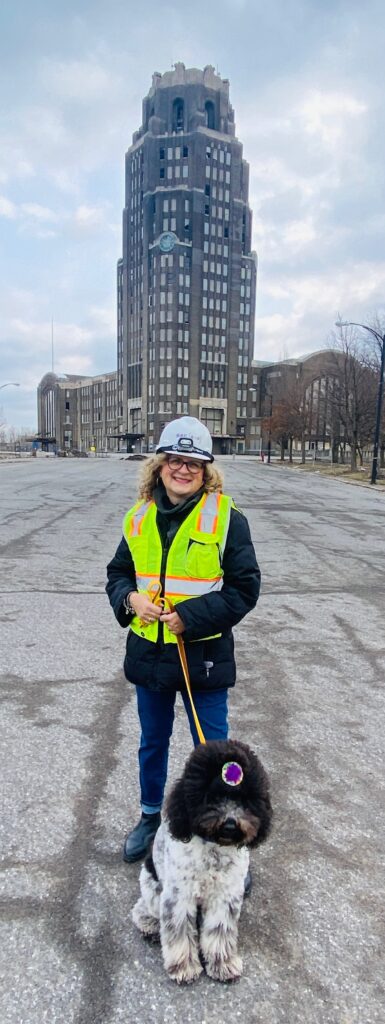True Green Cities/Celebrating Ten+ Years: “Pointing About Town” with a Women-Owned Business

Celebrating Ten+ Years! It’s been twelve years since I launched Barbara A. Campagna/Architecture + Planning, PLLC and while many things have changed, my goal to work on “greening what’s already here” continues to be met, often in places I never expected.
“Pointing About Town” as a Solopreneur
My office partner (and sister) writes a blog called Making a Point and writes a regular series entitled “Pointing About Town” about small business owners. One of her first pieces was about BAC/Architecture + Planning, PLLC. We did a photo shoot in front of my recent projects, the Buffalo Central Terminal. With the Smith Group, I worked on the Master Plan for this towering Buffalo landmark. The Master Plan and an accompanying Neighborhood Plan for the Broadway-Fillmore Neighborhood were completed in 2021.
It’s been an interesting year, finishing some great projects and getting ready to start some even more terrific ones. But the stresses of running a small business continue to be a struggle. In fact several of my colleagues and I are running a panel entitled “Keeping Micro-businesses & Solopreneurs Relevant and Resilient” at this year’s AIA Convention in San Francisco in June. My sister’s “Making a Point” weekly blog discusses these small business issues. If you have a small business or are considering opening your own business, I would suggest you bookmark “Making a Point”!
All week I will be posting updates about current and upcoming projects. My actual business anniversary is April 19th.
